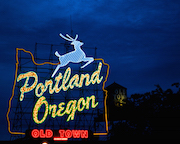Each group has provided three prioritized readings. Local copies of PDFs are linked from the titles below.
Or you can download a full zip of the PDFs (with groups and priorities in the filenames). ![]()
Borgman/Darch, UCLA/UIUC, Knowledge Infrastructures
-
Borgman, C. L., Darch, P. T., Sands, A. E., Pasquetto, I. V., Golshan, M. S., Wallis, J. C., & Traweek, S. (2015). Knowledge infrastructures in science: Data, diversity, and digital libraries. International Journal on Digital Libraries, 16(3-4), 207–227. http://doi.org/10.1007/s00799-015-0157-z. Also available at http://works.bepress.com/borgman/371/
-
Darch, P. T., Borgman, C. L., Traweek, S., Cummings, R. L., Wallis, J. C., & Sands, A. E. (2015). What lies beneath?: Knowledge infrastructures in the subseafloor biosphere and beyond. International Journal on Digital Libraries, 16(1), 61–77. http://doi.org/10.1007/s00799-015-0137-3
-
Borgman, C. L., Wallis, J. C., & Mayernik, M. S. (2012). Who’s got the data? Interdependencies in science and technology collaborations. Computer Supported Cooperative Work, 21(6), 485–523. http://doi.org/10.1007/s10606-012-9169-z. Also available at http://works.bepress.com/borgman/260/
Data Science Studies Group, U Washington, UC Berkeley, and NYU
-
Tanweer, Fiore-Gartland and Aragon (2016)Impediment to insight to innovation: understanding data assemblages through the breakdown–repair process Information, Communication, and Society
-
Trace Ethnography: Following coordination through documentary practices (Geiger and Ribes, 2011) In Proceedings of HICSS.
-
Blog: Community level data science and its spheres of influence: beyond novelty squared (Fiore-Gartland, Tanweer) Weblink
Herbsleb, CMU
-
Trainer, E. H., Chaihirunkarn, C., Kalyanasundaram, A., & Herbsleb, J. D. (2015). From Personal Tool to Community Resource: What’s the Extra Work and Who Will Do It? In Proceedings of the 18th ACM Conference on Computer Supported Cooperative Work & Social Computing (pp. 417–430). New York, NY, USA: ACM. http://doi.org/10.1145/2675133.2675172
-
Trainer, E. H., Kalyanasundaram, A., Chaihirunkarn, C., & Herbsleb, J. D. (2016). How to Hackathon: Socio-technical Tradeoffs in Brief, Intensive Collocation. In Proceedings of the 19th ACM Conference on Computer-Supported Cooperative Work & Social Computing (pp. 1118–1130). New York, NY, USA: ACM. http://doi.org/10.1145/2818048.2819946
-
Howison, J., & Herbsleb, J. D. (2013). Incentives and integration in scientific software production, ACM Conference on Computer-Supported Cooperative Work (pp. 459-470). San Antonio, TX.
Howison, UT Austin
-
Howison, J., & Bullard, J. (2015). Software in the scientific literature: Problems with seeing, finding, and using software mentioned in the biology literature. Journal of the Association for Information Science and Technology (JASIST), Article first published online: 13 May 2015. http://doi.org/10.1002/asi.23538
-
Howison, J. (2015). Sustaining scientific infrastructures: transitioning from grants to peer production (work-in-progress). Presented at the iConference, Irvine, CA.
-
Howison, James (with Herbsleb, J.) (in progress) The Governance Of Software Ecosystems For Science: Challenges And Policy Recommendations For Sustainable Scientific Software. This is a working paper I’m considering changing into a book (thus it starts with an intro chapter and chapter outline).
